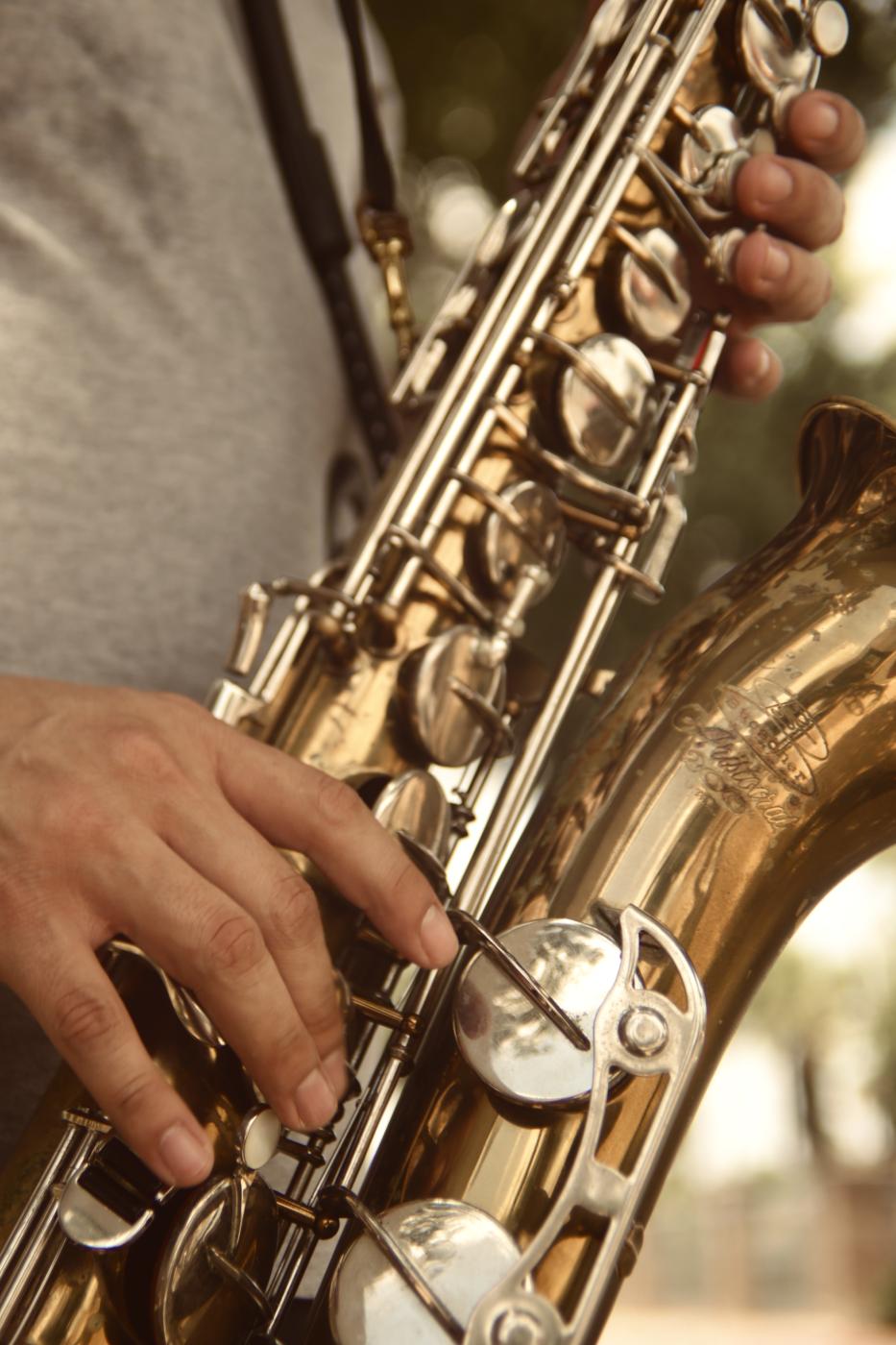Books
News
On Music
michael angelo medina
Jul 2, 2025
Summary
Music is the pattern of the sound expressed as an art.
— Hazrat Inayat Khan
Creation did not begin with a bang, but rather with a sustained note, a primordial pulse through the void, a generative oscillation that spun atoms out of light, scattered suns across the cosmos like dust, and stirred the silent firmament to breath and bloom. This is not metaphor, but truth. As the great seers have unveiled, light is not simply particle, but wave; form is not fixed, but an ephemeral dance with uncertain borders.The universe is in a state of harmony with itself. Wave-particle duality (Heisenberg, 1927; de Broglie, 1924) reveals that the fundamental layer of reality is not substance, but sound. String theory proclaims that the smallest building blocks of reality are not “things,” but vibrating strings of potential, each with its own frequency. (Greene, 1999). We, beloved reader, are songs in motion, resonating eternally through time.
Earth sings too. The Schumann Resonance, a frequency discovered in 1954 by physicist Winfried Otto Schumann and later explored in relation to the human brain, averages 7.83 Hz. This is the same rhythm as our alpha brainwave state, the frequency of calm awareness and meditative presence (Koenig, 1954; Persinger, 1987). To hear Earth is to hear your own mind. We are not merely creatures upon the soil, but instruments in Terra’s great orchestra. When we attune to sonos, we enter harmony with All. As Terra is triform in body, mind, and spirit, so too is music. Every true song is a triune architecture, composed of rhythm, harmony, and melody.
Let us decode each.
Rhythm
Rhythm is grounding. The earliest human-crafted instruments were percussive, that of objects we drummed upon with sticks, mimicking the cadence of heartbeat with which to sign and march in unison. Rhythm empowers the motor cortex and limbic system, stimulating regions of movement and emotion into greater activity (Grahn & Brett, 2007).
Rhythm pulls us into body, into earth, into dance. Shamans knew all along that drumming in stable tempo produces trance. Bittman et al. (2001) confirm that group drumming regulates cortisol, the stress hormone, and enhances immune function. Rhythm heals us as it moves us.
Harmony
Harmony is geometry in wave-form functions. Every chord and every interval follow sacred ratios, such as phi, those of creation at large. The perfect fifth (3:2), the major third (5:4), the octave (2:1), and many others all mirror the mathematical fingerprints found in spiral galaxies, plant growth, and planetary orbits.
Why does harmony feel good? Because these intervals allow us to relate directly to the celestial order, thus actívating synchronized neural oscillations, especially in the prefrontal cortex and insula that contribute to emotional integration and clarity (Blood & Zatorre, 2001).
Harmony is the sonic language of heaven, written in ratio. When two notes unite in proper proportion, they become more than themselves, creating a field of order. Harmonic sounds transform us even as they regulate the cosmos into a singular state of perfection.
Melody
Melody is time expressed in numbers. It is the story of the quest, performed by all who vibrate, atom and man alike.
Where rhythm grounds and harmony stabilizes, melody ascends, taking one’s mind on a journey via the simulation of a story. This is accomplished by the rise and fall of notes, the agreement between the succession of notes, and the resolution of tension created by artificed discord. This is especially evident in songs such as Samuel Barber’s “Adagio for Strings”, where for two full cycles the song rises in steady progression, only to fall and restart at the climax of the cycle, yet on the third melodic cycle the song transcends the boundary created by the first two cycles, continuing into unexplored lyrical territorio and thus creating a breakthrough moment for the strings to soar. Melody stimulates the temporal lobe, which governs memory and auditory emotion, and thus triggers dopaminergic pleasure centers (Salimpoor et al., 2011).
These experiences contribute to the phenomenon of frisson, that holy chill, that shiver of awe, which we now know to be a sudden surge of light being received into the nervous system via photonic transmission through the parietal lobe. Frisson is not random. It is a reaction to truth as it is experienced, or deception as it is exposed.
Discord
Let us now speak on the opposite of harmony.
When music breaks its own rules, screeching without form, overlapping in chaotic clusters, grinding against itself, the result is discomfort, tension, even fear. This is due to three primary factors, listed below:
Biological Alarm
Certain frequencies, especially in the 2–4 kHz range, mimic the sound of human screams and predator cries. These trigger the amygdala, our fear response center (Blumstein et al., 2010). Discordant violins, detuned horns, and jarring noises tap into this ancestral reflex.
Acoustic Interference
Close but unequal frequencies generate a pulsing effect caused by amplitude modulation. This is perceived as uncomfortable oscillation, which the auditory cortex interprets as unresolved data, like a question never answered (Plomp & Levelt, 1965).
Cognitive Dissonance
Acoustic Interference
Close but unequal frequencies generate a pulsing effect caused by amplitude modulation. This is perceived as uncomfortable oscillation, which the auditory cortex interprets as unresolved data, like a question never answered (Plomp & Levelt, 1965).
Cognitive Dissonance
The frontal lobe monitors pattern and expectation. When a musical phrase leads toward resolution yet does not resolve, such as when it ends in a diminished chord or clashes unpredictably, the brain flags it as a potential error (Koelsch et al., 2002). This creates unease.
Discordant noise produces chaos, a state of randomness that lacks order, and can thus lead one to experience feelings of insecurity. Discord can be visualized the same as any other sound, via the study of cymatics.
Cymatics
Cymatics
Sound is heard by our auditory senses, yet that is but a pale echo of its presence. In truth, sonos shapes form. Through the study of cymatics, we find that sound vibrations sculpt matter into coherent, symmetrical forms, such as that seen in snowflakes, mandalas, and cellular shapes (Jenny, 1967). This is visible geometry. The music of Bach and the chant of the monks alike create crystalline order that can be visualized and recorded as formal data; every voice has a shape. Thus, music is not solely symbolic, though it does generate symbols, shapes, and forms as it builds the world.
Sources
- Blood, A. J., & Zatorre, R. J. (2001). Intensely pleasurable responses to music correlate with activity in brain regions implicated in reward and emotion. PNAS, 98(20), 11818–11823.
- Blumstein, D. T. et al. (2010). Acoustic characteristics of alarm calls: ecological and evolutionary perspectives. Proceedings of the Royal Society B.
- Carhart-Harris, R. L. et al. (2014). The entropic brain: a theory of conscious states informed by neuroimaging research with psychedelic drugs. Frontiers in Human Neuroscience, 8:20.
- Grewe, O. et al. (2005). How does music arouse “chills”? Annals of the NY Academy of Sciences, 1060(1), 446–449.
- Grahn, J. A., & Brett, M. (2007). Rhythm and beat perception in motor areas of the brain. Journal of Cognitive Neuroscience, 19(5), 893–906.
- Jenny, H. (1967). Cymatics: A Study of Wave Phenomena and Vibration.
- Koenig, H. L. (1954). Über die Schumann-Resonanz der Erdatmosphäre. Zeitschrift für Naturforschung.
- Koelsch, S. et al. (2002). Music, language and meaning: brain signatures of semantic processing. Nature Neuroscience, 5(7), 685–694.
- Persinger, M. A. (1987). Enhanced incidence of ‘the sensed presence’ in people who have learned to meditate. Perceptual and Motor Skills, 64(2), 583–586.
- Plomp, R., & Levelt, W. J. M. (1965). Tonal Consonance and Critical Bandwidth. Journal of the Acoustical Society of America, 38(4), 548–560.
- Salimpoor, V. N. et al. (2011). Dopamine release during anticipation and experience of peak emotion to music. Nature Neuroscience, 14(2), 257–262.
423

